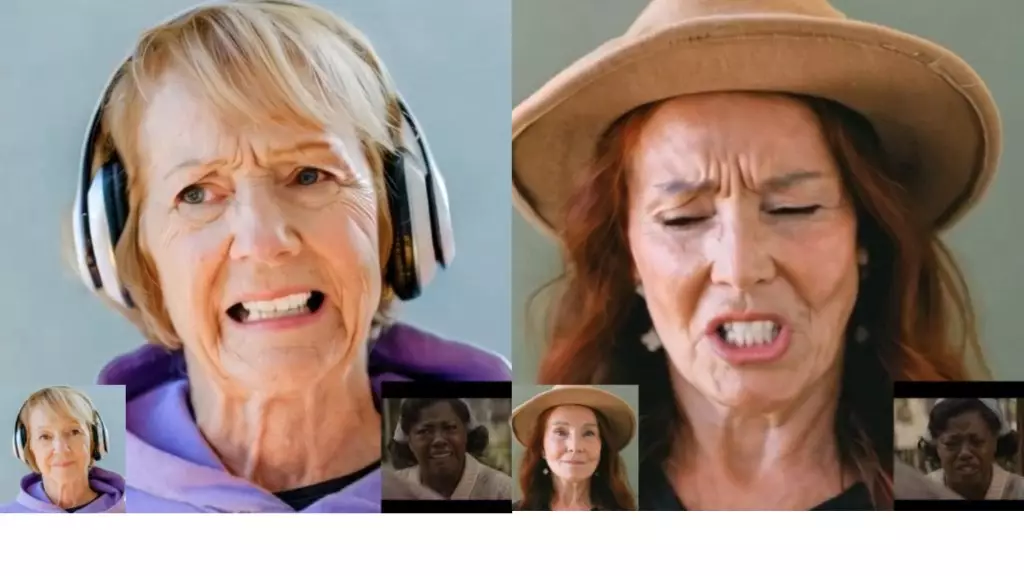In a groundbreaking development that could redefine the landscape of digital content creation, ByteDance, the parent company of the wildly popular platform TikTok, has unveiled an innovative artificial intelligence system known as “X-Portrait 2.” This advanced technology transforms still photographs into dynamic video performances that encapsulate emotional depth and subtle expressions, paralleling the authenticity of real-life actions. By ingeniously merging software capabilities with rich datasets collected from its extensive user base, ByteDance is solidifying its position at the forefront of AI advancements, prompting discussions about the implications of such technology in various domains.
At the crux of this transformative technology lies its ability to render still images into short video clips that mirror iconic scenes from well-known films such as “The Shining”, “Face Off”, and “Fences”. The results are strikingly realistic, showcasing the capacity of X-Portrait 2 to infuse facial expressions with a lifelike quality that is almost indistinguishable from actual human actors. Each captured expression—be it joy, anger, or fear—retains the identity and characteristics of the original photograph, thereby raising profound questions about authenticity in the digital age.
While earlier attempts to animate still images predominantly produced mechanical and artificial outcomes, ByteDance’s creation succeeds in capturing the natural flow of human emotions through the seamless coordination of facial muscle movements, subtle eye gestures, and complex expressions. This functionality suggests a significant leap forward for animation technologies that have historically relied on rigid movement mapping techniques.
ByteDance’s distinct advantage in this realm stems not just from technological prowess but also from its access to an unparalleled repository of user-generated content. TikTok processes a staggering volume of videos created by active users daily, allowing ByteDance to train its AI models on a rich tapestry of human emotions and expressions, collected across diverse demographics and contexts. This abundance of data enables more nuanced and refined animation capabilities, distinguishing it from competitors that rely on limited datasets or artificially constructed data for their models.
The firm’s strategic expansion into AI research outside of China—evident from the establishment of research hubs in Europe and planned investments in thousands of dollars worth of AI centers—reinforces ByteDance’s commitment to leading technological innovation. With regulatory challenges surfacing in Western markets, the company is still advancing its capabilities with a view to enhancing global collaboration.
The implications of X-Portrait 2 extend well beyond mere technical advancements; they threaten to disrupt existing paradigms within the animation industry itself. Traditional animation processes, which involve costly motion capture equipment and an intricate setup requiring numerous animators, may soon find themselves overshadowed by this cutting-edge system, allowing a singular photographer to achieve complex animations with only a reference video. This evolution is particularly timely, given the debates surrounding digital rights and the concerns over AI-generated content, which often becomes muddled with ethical considerations.
By maintaining the framework of AI implementation as a private endeavor, ByteDance signals a heightened awareness of the potential misuses of such powerful tools. The issue of unauthorized performances becomes paramount in discussions about AI and intellectual property, prompting a broader consideration of regulations and ethical standards.
As opposed to many entities in the AI field that focus predominantly on textual or analytical capabilities, ByteDance zeroes in on one significant aspect of human interaction: movement and emotion as expressed through visuals. This core competency borrows from TikTok’s emphasis on tracking trending dances and facial emotions, revealing an essential understanding of how individuals convey feelings when engaging in a digital platform.
Such expertise may prove particularly crucial as society continues to transition toward virtual interactions, marking a paradigm shift in how people communicate and conduct business online. ByteDance’s technological advancements not only promise to enhance how viewers experience media but could also redefine relationships built in virtual spaces.
While the promising development of X-Portrait 2 signifies established progress, it also raises urgent queries regarding the authentication and verification of AI-generated content. As discussions surrounding security become integral to AI development, the need for safeguarding sophisticated models from internal and external vulnerabilities intensifies. As such concerns mount, the delicate balance between creative innovation and ethical responsibilities must be assessed.
In an era where digital misinformation increasingly blurs the line between fact and fiction, the future of human interaction online may well hinge on the technologies being developed across the globe. ByteDance’s strides in AI animation signal the potential for changing the very fabric of digital communication and expression, demonstrating that innovation knows no geographical limits and promising a reimagined future influenced by capabilities beyond the borders of Silicon Valley.


Leave a Reply